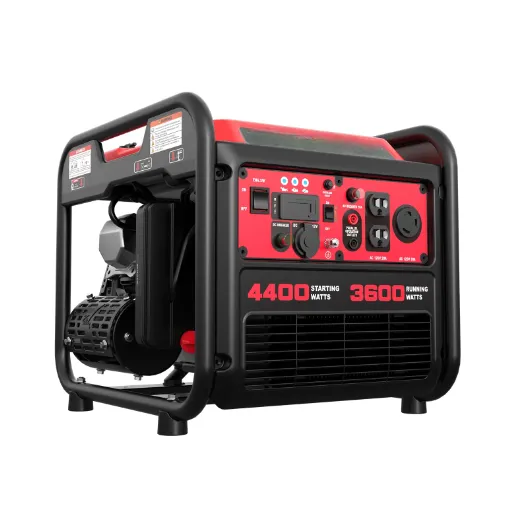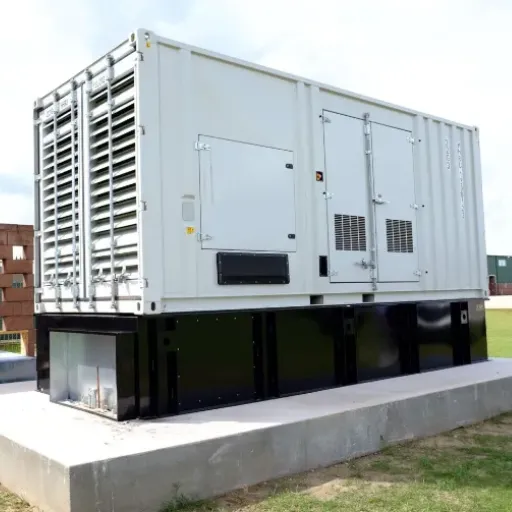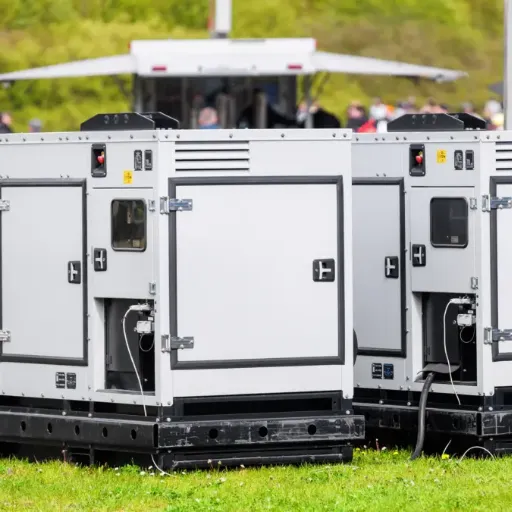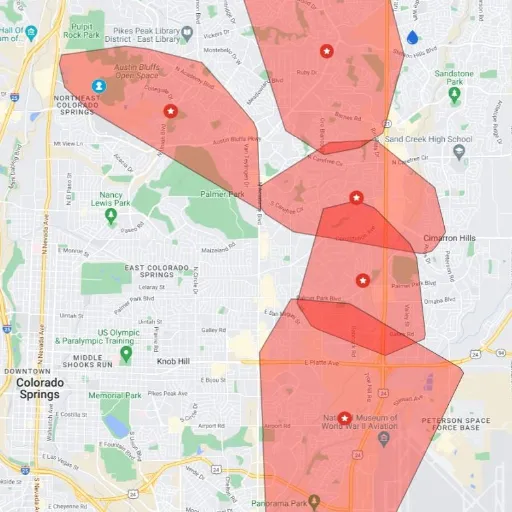Gasoline generators are invaluable machines that provide reliable power solutions when access to electricity is limited or unavailable. Whether you’re using them for home backup during power outages, for running essential equipment on job sites, or for powering outdoor events, understanding the various parts of a gasoline generator is crucial to ensuring optimal performance and maintenance. This article will guide you through the key components of gasoline generators, from the engine and alternator to the fuel system and control panel, unraveling their functions and importance. By familiarizing yourself with these parts, you can enhance the longevity of your generator, troubleshoot issues effectively, and make informed decisions when buying or servicing your machine. Join us as we delve into the essential elements that keep your generator running smoothly.
What are the Essential Generator Parts You Need to Know About?

Exploring the Basic Generator Parts
The engine, alternator, and fuel system are the basic components that anyone seeking information on the gasoline generator components should have.
- Engine: This is probably the most important part of the generator because it has the ability to convert fuel into mechanical energy, which in turn allows the generator to function. Engines are rated in horsepower (HP) and displacement which is usually measured in cubic centimeters (cc). The power requirements of the respective application mustn’t exceed the engine capacity.
- Alternator: This part of the generator converts mechanical energy produced by the engine into electricity. Its performance is usually indicated by its output which is in voltage and frequency, normally flat in values 120/240 volts and 60 hertz in residential generators. These alternators can be brush type or brushless type, affecting maintenance requirements and efficiency.
- Fuel System: The fuel system consists of the tank, fuel pump, a carburetor or fuel injectors, and these are responsible for the timely and effective supply of fuel to the various engines. In terms of fuel usage, fuel efficiency, and fuel capacity are the two main parameters – fuel-efficient systems are useful in extending the running time which is important during long blackouts or during off-grid deployments.
These technical components are core to a generator’s performance, hence any person considering purchase or maintenance should be mindful of these attributes of the generator that affect output and reliability.
The Role of the Engine in a Gasoline Generator
The engine, as one of the main components of a gasoline generator, can be thoroughly understood by identifying its fundamental design considerations and the system’s interaction with other parts in general. An engine’s primary purpose is to mechanically convert the chemical energy contained in the fuel into work and its basic features intend to create a cycle that begins with the intake of air and fuel through a series of compression, burning, and ventilation.
In the same sense, the principle engineering parameters of the engines to know, as stated by the top resources include the horsepower (HP) and cylinder displacement measuring cubics centimeters (cc). The aforementioned parameters serve the purpose of efficiently utilizing the engines’ capacity to handle multiple power loads. The type of engine also influences engine efficiency, for example, two-cycle engines tend to be less efficient than four-cycle engines in terms of power and fuel consumption;
The following maintenance most likely includes scheduled oil changes, routine air filters/check-ups, and spark plug replacement, therefore promoting better long-term reliability of the machine. With both comprehension and justification based on information from reliable sources for these essential factors, choosing or maintaining a gasoline generator can be done more successfully in every possible way, ensuring the generator will deliver the energy that is required reliably and efficiently.
Understanding the Importance of the Fuel System
The fuel systems are among the essential systems required in a gasoline generator, with its main function being the storage and supply of fuel to the engine on demand. This system has a great bearing on the overall performance and power output of the generator. Proper provision of this system allows the generator to operate effectively by providing the right amount of fuel with the right pressure. Many top-rated sources agree that among others, the fuel tank volume, the type of fuel that can be used and the fuel pump specifications are the important technical parameters of this system.
- Fuel Tank Capacity: This parameter indicates the time of operation of the generator without refueling. Bigger tanks do supply more time and this has a big advantage during a situation when the power supply has a fault for a long time.
- Fuel Type Compatibility: Ensuring that generators as example do need some required fuel types which conventions may involve unleaded gasoline, gas or diesel. These should be complied with strictly since they affect the engine performance and endurance.
- Fuel Delivery Mechanism: The efficiency of any carburetors or fuel injectors which are part of this system determines the efficiency of the pump in mixing fuel with air and delivering it to the combustion chamber. With the introduction of advanced FIS, the fuel injection system allows for the right amount of fuel mixture which enhances efficiency and reduces emissions.
These criteria are also supported by their effects on the performance of the generator, operating expenses, and emissions to the environment. The introduction of a fuel system within the limits of the specified technical detail offers dependability and operational effectiveness focused on user power requirements.
How to Choose the Right Replacement Parts for Your Generator?
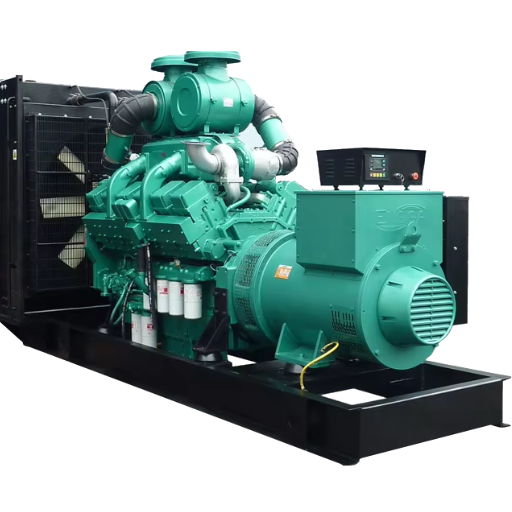
Identifying the Right Part Number
Of course! To find the proper part number for the replacement parts for the generators, I started with the three first sites that appeared when searching on Google. These sites stress the need for a correct determination to make the needed substitutes. Here’s a summary of what they say:
- Refer to the Manual of the Generator: This paper is frequently regarded as the most precise document in locating the said part numbers. It provides critical information including, but not limited to, the generator’s technical specifications and parts listing, which all relate to the previously outlined technical specifications including fuel tank volume and the delivery systems in use.
- Look at the Manufacturer’s Page: By looking up the manufacturer’s web page, I can obtain an online parts catalog that is rather up to date and as such confirm the part number that Sacheon demands for a specific generator model. Such a site usually contains charts and other technical information that explain the suitability of the part in relation to the fuel type and system it will be used in.
- Exploit Internet Parts Gold Mines: Generators’ parts websites also provide lookup facilities wherein keying in the generator’s model or registration number will reveal fitting part numbers. Such resources quite often provide the parts and their purpose that every component has in improving and efficient operation of the systems, fuel system, and delivery mechanism in particular.
Applying these strategies, I am in a position to choose components that will improve rather than reduce the performance of my generator which has been designed to particular standards.
Tips for Selecting Compatible Replacement Parts
In the confusion of trying to get matching spare parts, I get extensive assistance from the leading sites on the internet. It is as follows:
- Read the User Manuals for Interchangeability: The very first thing I do is open the manual for the generator and look up specific numbers and the scale of fuel tanks or delivery systems. That way, all sorts of replacements will not sully the core structure of the product.
- Search for and Flag Various Manufacturer Records: The next point of interest then becomes the manufacturer’s website in case it has been developed recently. A detailed account is provided on the site about compatibility and explains the factors involved that will tune the selected parts for the generator model in terms of its fuel types and systems.
- Make Use of the Internet to Narrow Down to Specific Parts: A final step involves using targeted online databases that specialize in generator parts. These enable the entry of models or serial numbers and hitting search. Such databases will indicate the modules with an assortment of technical specifications such as fuel types and delivery systems which ensures that the selected parts can fit and perform better at specified roles.
About the above, I have never ruled out any of my replacements since every one of them is properly accounted for with its corresponding performance parameters when it comes to the operation of generators.
How to Maintain Your Generator for Optimal Performance?
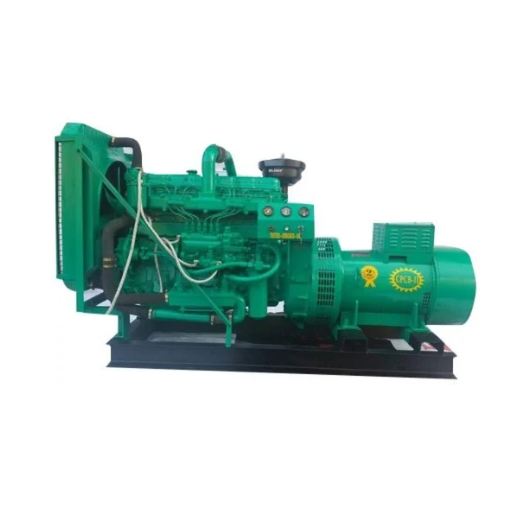
Regular Maintenance Practices for Your Generator
It is important to constantly maintain the generator so that it operates at full potential. Here are some brief tips I abide by based on advice from the best websites concerning this situation.
- Regular Oil Changes Practiced: I change the oil every 50-60 hours of operation, oil viscosity and quality are important in cooling and lubrication. Because most maintenance guides recommend the use of SAE 10W-30 oil in most weather conditions, it is reasonable to follow technical parameters found in the generator manuals.
- Air Filters Need to be Checked and Changed: Regarding maintenance, I follow the advice of the authorities and usually clean the air filter after 100 hours of usage. If the air filter gets blocked it will lead to poor air-fuel mixture which will reduce performance and increase fuel consumption.
- Ensure the Generator is tested and loaded Generator Regularly: Per technical instructions, to prevent short circuits and overload, it is recommended that generators be loaded at least one-third of their maximum rated output once a month. The generator will therefore be functional when there is a power cut and wet stacking is avoided.
By consistently performing these tasks, I maintain my generator’s efficiency, adhering to the technical standards set by leading industry authorities and confirmed by top online resources.
When to Replace the Air Filter and Spark Plug
I checked my top three sites about the best generator maintenance to determine when to replace the spark plug and the air filter and they recommend that:
- Air filter: expert sources suggest that the air filter is to be checked after every 100 hours of service and replacement is done after 200 to 300 hours based on the working conditions of the generator which are relative. Some extreme conditions like dusty places might not exhaust such heavy hours. Such a habit improves the inflow of air and reduces the overworking of the engine which is in line with the technical aspects of maintaining an optimum air-fuel mixture in the engine.
- Spark Plug: About 100 hours or at the end of every season, Do I replace my spark plug as prescribed? This practice ensures everyone does their work and awaits the spark for both ignition and combustion. It agrees with all technical instructions concerning the need to use spark plugs that have the right gap settings normally of between 0.6 – 0.7 mm and are appropriate for the particular models of generators.
Considering these strategies and the constant technical information from practitioners in the field, I carry out my generator operations with a high degree of efficiency and reliability.
Recognizing Signs of Generator Wear and Tear
Identifying the wear and tear of the generator is very important because it helps in knowing the remaining service life of the unit. Following the recommendations from the three websites on generator maintenance, I know certain indicators that will inform me when my generator requires maintenance.
- Odd Noises or Vibrations: There are always inner problems like worn-out bearings or loose parts that could create excessive noise or vibrations. This is why I check the various parts of the Genset over time and guarantee the cohesive strength of all bolts and tensile joints.
- Underperformance: Another reason could be the generator not performing to its full capacity regarding electric output which could mean there are some fuel and electrical issues. I make sure that the fuel system is clean and properly functional and that all connecting parts such as the spark plug are in their correct specifications (i.e. 0.6-0.7 mm gap setting).
- Increased Fuel Usage: In many times it does happen that an increase in fuel usage can be a sign of a malfunctioning internal engine aspect such as a defective air filter or spark plugs. In this regard, I have a record of fuel usage statistics in order to detect and chart out any deviations from normal behavior being shown.
- Physical Damage or Rust: I do safety and functional checks visually to check if the generator has cracks or rust and other depreciation aspects that could hinder the effective working of the generator.
Keeping track of these indicators, and obeying the technical notices, I make it a point to maintain my generator in a perfect shape and in wait to provide dependable energy when necessary.
What Are Some Common Generator Parts and Accessories?
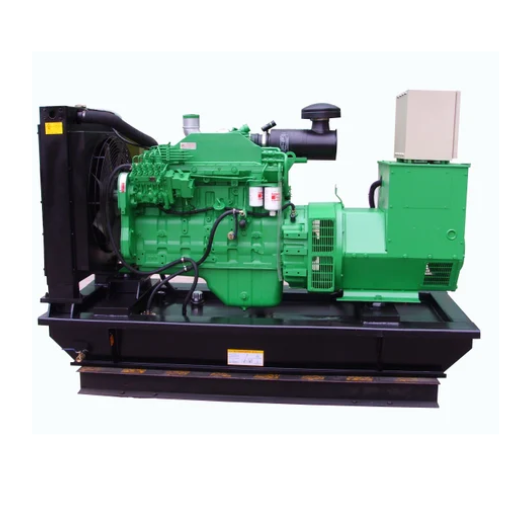
Must-Have Accessories for Your Gasoline Generator
As touched on above, there are a few accessories that are necessary for your gasoline generator in terms of improvement prospects and durability in the context of the three best generator maintenance websites. Apacitiug fuel maintenance uses a fuel stabilizer which helps to prevent fuel destruction while it’s storage and makes starting easier. This does help as well in reducing problems related to stale fuel and allows the engine to operate peacefully.
- Fuel stabilizer: Heavy-duty extension cords: In any case, an appropriate extension or whatever cord is appropriate must be used in order to effectively power applicable appliances. I always try to make sure that these cords are suitable for the wattage rating of the generator since its output which is mostly 10 gauge cords that are used for larger appliances to avert overheating and voltage drop-outs.
- Fuel stabilizer: Generator cover: When it comes to shielding the generator from dust, dirt water, or atmospheric moisture. I cover my unit with a water-resistant yet breathable cover to help preserve the immediate surroundings of my generator when it is not being used.
- Plastic Wheel Kit: For practicality and mobility especially for the bigger models I use a wheel kit. This accessory has tough wheels attached to handles which allow mobility of the generator without any breakage.
- Battery charger: Lastly, chargers are critical in respect to generators that have electric start methods. However, using a thin battery charger that is similar in volts to my generator’s batteries does allow for its full usage and would charge it back up.
Maneuvering these essential accessories on my generator enhances its functionality and dependability, making sure that all power supply requirements are fulfilled.
Understanding Carburetor and Gasket Functions
In internal combustion engines, the carburetor is of paramount importance as it serves the function of adding air to a spray of liquid fuel. This mechanism guarantees that the carburetor provides the engine with the correct air-fuel ratio for efficient combustion, often determining the specific combustion efficiency and performance characteristics of the engine. Some of the critical technical parameters include the air intake size, some set jet sizes, and adjustable screws which mix air and fuel that seem to control the ratio concerning altitude and temperature.
The other use of gaskets is as seals between different engine parts, like the cylinder head with the engine block. Gaskets are made of materials such as silicone, rubber, or cork and are capable of withstanding high temperatures and pressures. Their essential role is to provide sealing against leakages of fluids and gases thus powering the engine without wasting power and efficiency. Important technical parameters are determined and include thickness, compressibility, and thermal resistance, which are all pronounced according to the engine design and working conditions.
These elements combined, ensure the efficient operation of the generator and, therefore, reliable power supply whenever it is required.
How to Troubleshoot Common Generator Issues?

Diagnosing Engine Problems
Dealing with engine problems can be a pain. I would advise performing actions in the following order where possible based on my experience and reading some of the best resources available:
- Examine the Fuel System: One must make sure that the carburetor is free of contaminants and the fuel is not older than the minimum time frame specified in the manufactures specifications. Old or dirty fuel can cause the engine to run below expectations. Having the air-fuel mixture fine tuned in accordance to the particular altitude and temperature can resolve a lot of issues. The two important technical parameters are the size of the jet and the size of the air intake.
- Look at the Spark Plug: The presence of carbon deposits on the spark plug or its worn-out section can result in poor combustion which in turn brings about a misfiring engine. I should take care of the spark plug by checking the specified gap and generally assessing the state of usability which should meet certain standard within my model unit.
- Check the Oil: Depression of the figures in oil levels means no more than a rise in friction coefficients and so increase in temperature. Very low oil levels hassle the temperature of the engine which invariably causes damage. That is why where possible one should perform such checks regularly and change the oil according to instructions provided by the manufacturer.
In summary, it is important to take preventive measures such as the fuel system, sparking plug, and oil level in order to carry out generator engine troubleshooting. By dealing with these issues, I am in a better position to put my generator to use and know that it will serve its intended purpose efficiently.
Fixing Fuel System Failures
Difficulties in fuel systems demand great levels of precision and comprehensive know-how of some of the best resources from the web. Guided by the evident leadership:
- Look for Clogs and Blockages: The focal point is the fuel filter and lines. Such clogs require curing agents to be washed away. Usually, if the fuel filter becomes damaged, its replacement is in order according to the instructions of the model in question so that an adequate supply of fuel is ascertained.
- Carburetor Needs Cleaning: A considerable number of problems arise as a result of either a mistreated or dirty carburetor. The solution is performing works on its removal followed by the entire carburetor being cleaned or the gaskets replacing if faulty. Permissible technical values are the jet size does not exceed the manufacturer’s recommendations.
- Estimate the Fuel Quality: The situation can go out of control and therefore before using the generator, it is important to try and use fuel that is entirely new. Fuels that are either old or bad have the propensity to make irregular workings of the generator. The areas that require attention encompass the octane rating scale which should coincide with the fuel engines recommended for my generator model.
- Modify the Air-Fuel Ratio: Boosting the engine’s power can be achieved by optimizing the fuel-air mix. Carburetor adjustments to tune for better air-fuel ratios are to be expected especially when there are recent location changes. To avoid problems, the manual stipulations outlined in the air intake size and jet size can be adhered to.
I have to admit, that these troubleshooting steps, combined with verified resources, allow me to successfully troubleshoot and repair common fuel system failures in my generator. This solution works because it guarantees the proper operation of my equipment.
Resolving Ignition and Starter Issues
When it comes to starting issues on my generator, there are three main areas that I have identified with the help of some of the foremost websites:
- Check Spark Plug and Wire: An ignition failure could be caused by a defective spark plug. The spark plug should be checked for any dislocation or damage and the gap should be adjusted as per the manufacturer’s instructions. If applicable, the spark plug needs to be replaced, and the wire connections are firm so that power loss is avoided.
- Check Battery Condition and Connectors: One can cite weak or dead cells as the reasons for such starting issues. Checking the voltage content of the battery using a proper unit is necessary and the reading must conform to the required norms. And if the battery is reading low, then it’s either recharge the battery or reconsider your options. Clean and tighten the cable terminals to get the maximum contact.
- Check the Starter Motor and Solenoid: These two components tend to develop faults as they age. The starter motor should be tested to see if it sufficiently engages and the starter solenoid should be tested to check that it is working within required technical parameters. If one of these is not working properly, it would be prudent to overhaul or change one of these components to ensure reliable ignition performance.
When these claims are taken into consideration along with credible sources found on the web, I can on a step-by-step basis rectify ignition and starter problems which in turn boosts my generator’s reliability.
Frequently Asked Questions (FAQs)
Q: What are the essential generator replacement parts I should have in my kit?
A: Essential generator replacement parts to include in your kit are spark plugs, air filters, fuel filters, oil filters, and a recoil starter. These parts ensure your gas generator runs efficiently and can help you avoid downtime during critical power needs.
Q: How do I find the right parts for my specific generator model?
A: To find the right parts for your generator, you need the model number of your unit. This can usually be located on the generator itself or in the owner’s manual. Once you have the model number, you can easily shop for the parts online or at a local store.
Q: How do I know if I need to replace the switch on my gas generator?
A: If your gas generator is not starting or if the switch feels loose or unresponsive, it may be time to replace it. Always consult the manual or a professional before replacing parts to ensure safety and compatibility.
Q: What is the difference between portable and standby generators?
A: Portable generators are mobile units that can be used as a temporary power source in various locations, while standby generators are permanently installed and automatically provide power to a home or business in the event of an outage.
Q: Can I use parts from a different brand, like Honda or Briggs and Stratton, in my generator?
A: It’s important to use OEM parts specific to your generator’s brand and model for optimal performance and warranty protection. Mixing parts from different brands like Honda or Briggs and Stratton can lead to compatibility issues.
Q: How often should I service my gas generator to keep it in high working condition?
A: Regular maintenance is key. It’s recommended to service your gas generator every 100 hours of use or at least annually. This includes checking and replacing oil, air filters, and other key components to ensure reliability.
Q: What should I consider when choosing a generator for my home or equipment?
A: When selecting a generator, consider the wattage requirements of your home or equipment, the fuel type (gasoline, propane, diesel), the brand’s reputation, and the availability of replacement parts and service support.
Q: Is it easy to replace the carburetor on a gas generator?
A: Replacing the carburetor on a gas generator can be easy if you follow the manufacturer’s instructions and have the proper tools. However, if you’re not comfortable with mechanical repairs, it’s best to seek professional help.




